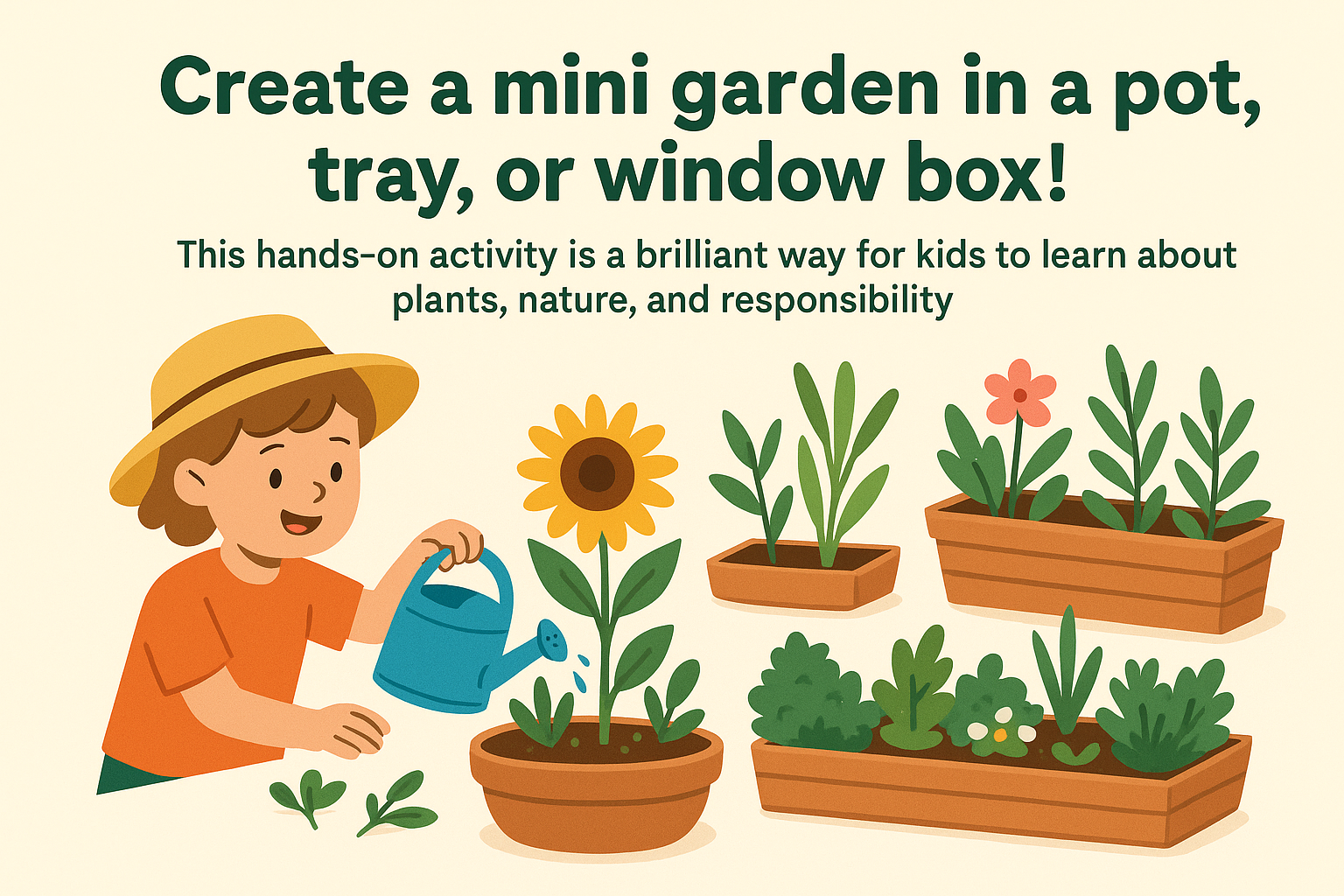Planting a mini garden is a lovely way to introduce children to the world of gardening and nature. Whether it’s a windowsill herb garden, a tray of wildflowers, or a collection of potted plants, this activity encourages observation, patience, and nurturing skills.
Children can help choose what to plant, prepare the soil, water their seedlings, and watch them grow over time. It’s great for teaching about life cycles, weather, and sustainability—plus there’s nothing more exciting than seeing the first green shoots poke through the soil!
Materials Needed
• Plant pots, seed trays, recycled containers, or a small wooden box
• Compost or potting soil
• Seeds (e.g. herbs, flowers, lettuce, beans) or small starter plants
• Watering can or spray bottle
• Optional: plant labels, lolly sticks, pebbles for decoration
Tools Needed
• Trowel or spoon
• Watering can or spray bottle
Steps
1. Choose Your Container: Pick something with drainage or make holes in the bottom if needed.
2. Add Soil: Fill with compost, leaving a little space at the top.
3. Plant Your Seeds or Plants: Follow seed packet instructions for depth and spacing.
4. Water Gently: Use a watering can or spray bottle to moisten the soil.
5. Decorate and Label: Add plant markers or pebbles to personalise your garden.
6. Watch and Care: Place in a sunny spot and water regularly. Keep an eye out for sprouts!
Variations
• Theme Gardens: Create a herb garden, butterfly garden (using wildflowers), or pizza garden (with tomatoes, basil, and oregano).
• Recycled Planters: Use yoghurt pots, egg cartons, or tin cans as quirky containers.
• Garden Journal: Encourage kids to draw or write about their garden’s progress.
• Miniature Garden: Add fairy houses or small animal figures for imaginative play.


Leave a Reply